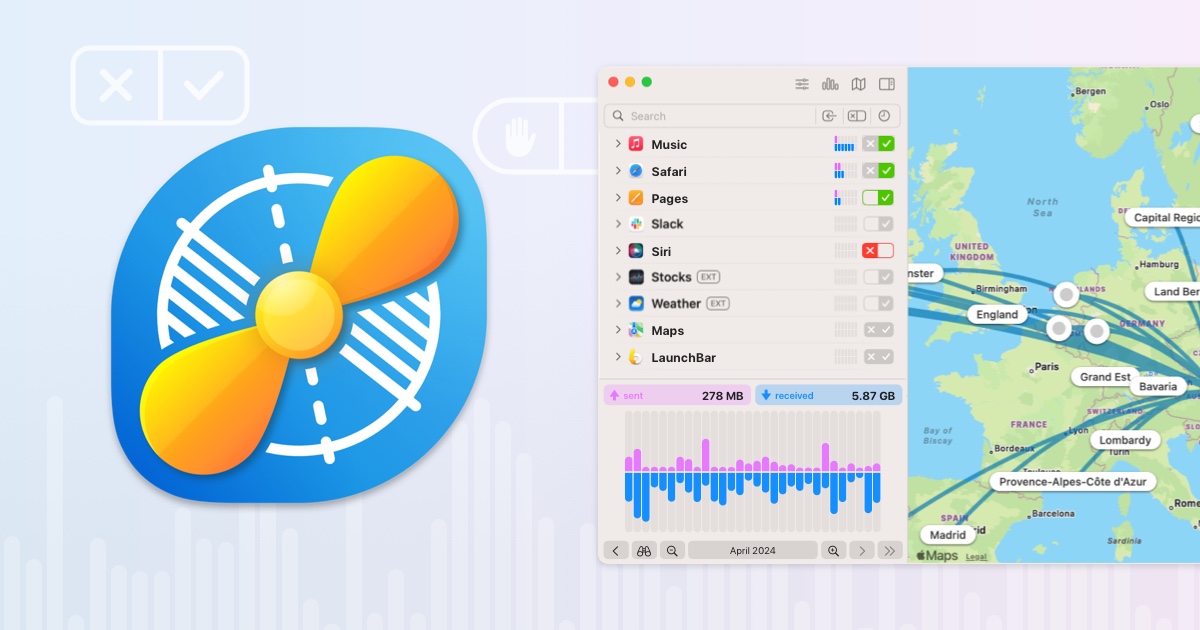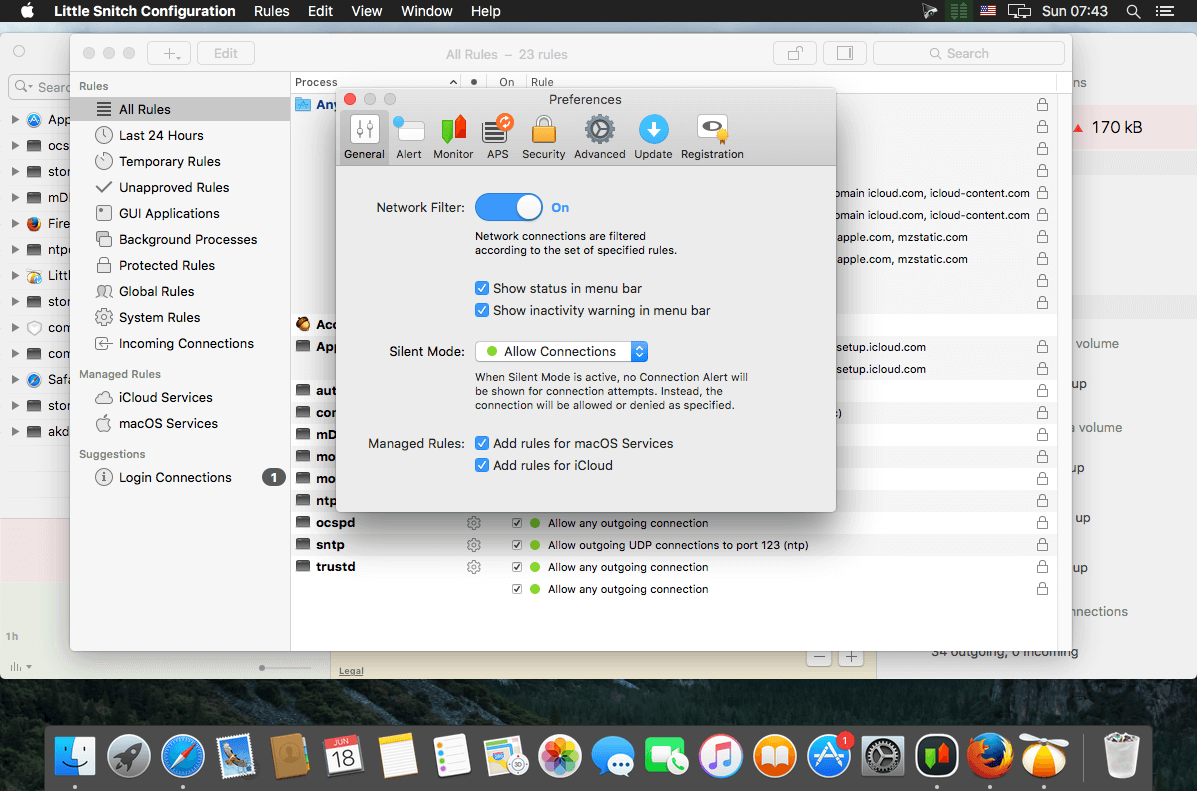
Little Snitch 3 allows control of incoming connections, too.
#LITTLE SNITCH WINDOWS SOFTWARE#
Previous releases of Little Snitch could block only outbound traffic, warning you only when programs and low-level software attempted to make a connection outside your computer. Little Snitch lets you drill down to exceedingly fine levels of control. Double-click a graph, and Little Snitch offers exceedingly detailed connection information, including total traffic and the most-recent time data was sent. Right-click (or Control-click) an app’s main entry or any server, and you can create a new rule based on that selection. Click any app to view a historical bandwidth-usage graph you can adjust the time period shown. The window shows every recently active program, a gauge of recent bandwidth consumption, and all the host/domain combinations to which each program has connected. I say, “Deny!” In some environments-government, military, or legal, medical, or financial businesses-there may be other security concerns that dictate whether or not you should allow such connections.įor keeping track of what apps are currently being monitored by Little Snitch and what they’re doing, Little Snitch’s already useful Network Monitor window has become more sophisticated in version 3. Others sniff or broadcast over the local network to determine if multiple copies of an app are running or for more-nefarious information-gathering purposes.

But when you see an alert that doesn’t pass the smell test, that’s when you’ll want to limit the connection (for a period of time or Until Quit are usually good choices) or deny it altogether.įor example, some programs make it their business to send back information about your usage, and you just don’t want them to do so.
#LITTLE SNITCH WINDOWS MAC#
But the duration pop-up menu to the right, which has expanded its range of choices since Little Snitch 2, lets you set the rule to expire after the affected program quits, after you log out, when the Mac is restarted, or for a specific length of time.Īssuming the affected app is one you use frequently and you want to allow to do its thing, you’ll likely choose Allow and Forever-most programs engage in benign activity to specific domains. Obviously, the Forever button makes it a permanent rule (which can be deleted or modified using the configuration program). You also control how long your rule remains in effect.

Clicking Allow or Deny adds a rule to Little Snitch’s configuration, bypassing this dialog in the future for varying degrees of specificity and periods of time.įor any particular connection, the program lets you choose how specific your Allow or Deny rule should be: Any Connection for all outbound traffic, a port number for all outbound traffic over that port, a domain name (or IP address) for any traffic to that domain, or, the most specific, a domain name (or IP address) paired with a port.Ĭlicking the Details button shows more information about the attempted connection. Using the previous example, you might see an alert that Google Chrome is trying to connect, using port 80, to Click Details to get even-more-detailed information. But even these passes are explicitly allowed via rules that you can view, with descriptions, in the Little Snitch Configuration app.įor previously unknown connections, Little Snitch presents a dialog box that shows you the requesting app’s icon, its name, and what it’s attempting to do. Many OS X system daemons, autonomous bits of low-level software, also get preapproved. Little Snitch comes configured to allow common activities-for example, Safari requesting data from port 80 (standard Web pages) and port 443 (https-secured pages)-to pass through without notice. Little Snitch offers this type of functionality, but it reveals this power in stages, allowing a simple approach for those who want security without fuss, while using configurable rules to provide levels of deeper and deeper access for those who want more-precise control.

But the OS X firewall can’t be configured to allow a connection from a particular Internet protocol (IP) address. OS X’s built-in firewall, when enabled, functions based on services and applications, allowing only inbound connections aimed at particular pieces of software-for example, a connection to iPhoto’s shared-library service.

Little Snitch has graduated from being a sort of outbound-only firewall with notifications to being a full-fledged firewall product with a friendly interface that informs you about any network-related activities.
#LITTLE SNITCH WINDOWS UPDATE#
The latest update to the software adds inbound-connection management, too. Little Snitch 3 intercepts these requests and presents them to you for inspection and approval. Apps, and even the OS itself, regularly reach out to the rest of your local network and to the Internet to probe, query, and blab. Our Macs can be chatty even when we wish they weren’t.


 0 kommentar(er)
0 kommentar(er)
